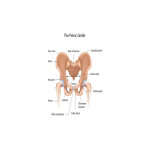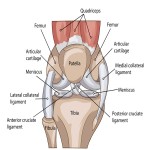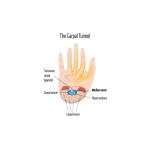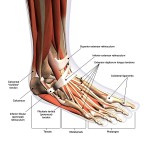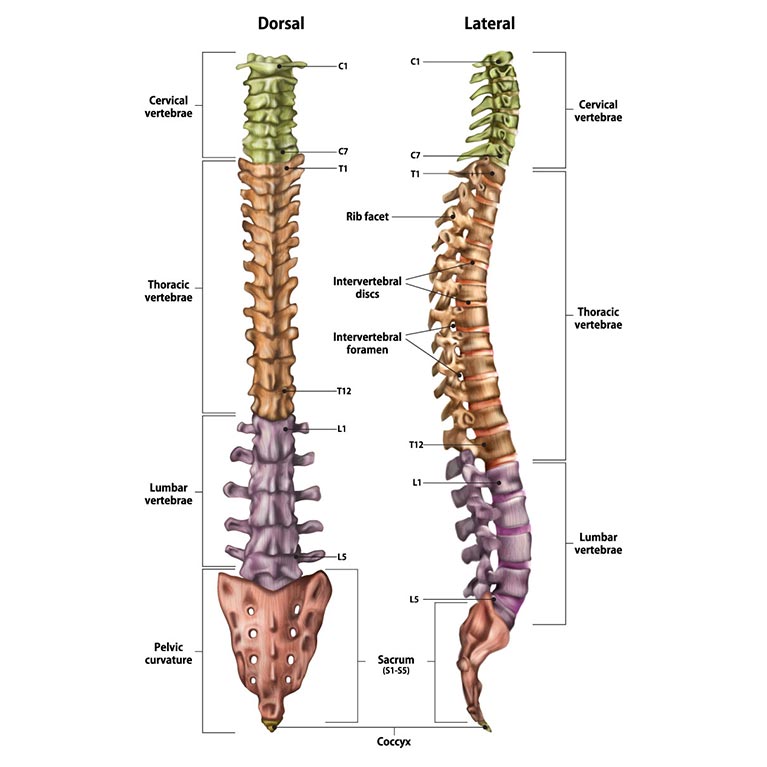The spine, also called the backbone, plays a vital role in stability, smooth movement and protection of the delicate spinal cord. It is made up of bony segments called vertebrae with fibrous tissue called intervertebral discs between them. The vertebrae and discs form the spinal column from the head to the pelvis, giving symmetry and support to the body.
The spine can be divided into 4 parts: cervical, thoracic, lumbar and sacral. The cervical spine comprises the first 7 vertebrae of the spinal column, which form the neck. It is highly mobile compared to other regions of the spine and has transverse foramina in each vertebra through which the vertebral arteries supply blood to the brain.
The Thoracic spine is the central region, which runs from the base of the neck to the bottom of your rib cage, comprising the next 12 vertebrae. Its main task is to provide the flexibility that holds the body upright, supporting posture and protecting the organs of the chest.
The lumbar spine is composed of the lower 5 vertebrae, making 24 in total along the length of the column. These vertebrae are taller and bulkier than the rest of the spine. Primarily this is because the lower back must withstand higher pressure due to body weight and other movements such as lifting, pulling and twisting. In some individuals, an extra or sixth lumbar vertebra may be present, which can cause complications such as decreased flexibility and bulging or herniated discs.
Finally, below the lumbar spine but connected to it lies the sacrum, which is a triangular bone at the base of the column which slots into the two pelvic bones.
